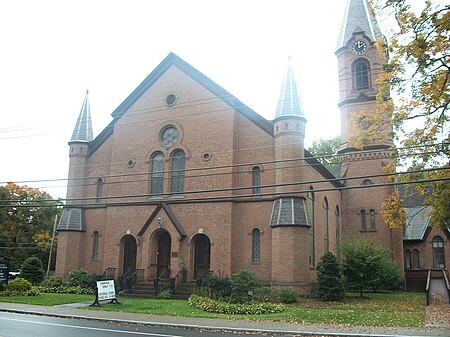Reformed Dutch Church (Kinderhook, New York)
Churches in Columbia County, New YorkDutch-American culture in New York (state)Dutch Reformed ChurchMartin Van BurenNew York (state) church stubs ... and 3 more
Reformed Church in America churches in New York (state)Religious organizations established in 1712Use mdy dates from May 2012

The Kinderhook Reformed Dutch Church located in Kinderhook, New York, was the sixth Church between Albany, New York and New York City. It was organized in 1712. Its cemetery, in a separate location one mile northwest of the church, contains the grave of President Martin Van Buren.
Excerpt from the Wikipedia article Reformed Dutch Church (Kinderhook, New York) (License: CC BY-SA 3.0, Authors, Images).Reformed Dutch Church (Kinderhook, New York)
Church Street,
Geographical coordinates (GPS) Address Nearby Places Show on map
Geographical coordinates (GPS)
| Latitude | Longitude |
|---|---|
| N 42.3933 ° | E -73.7006 ° |
Address
Church Street 4
12106
New York, United States
Open on Google Maps






